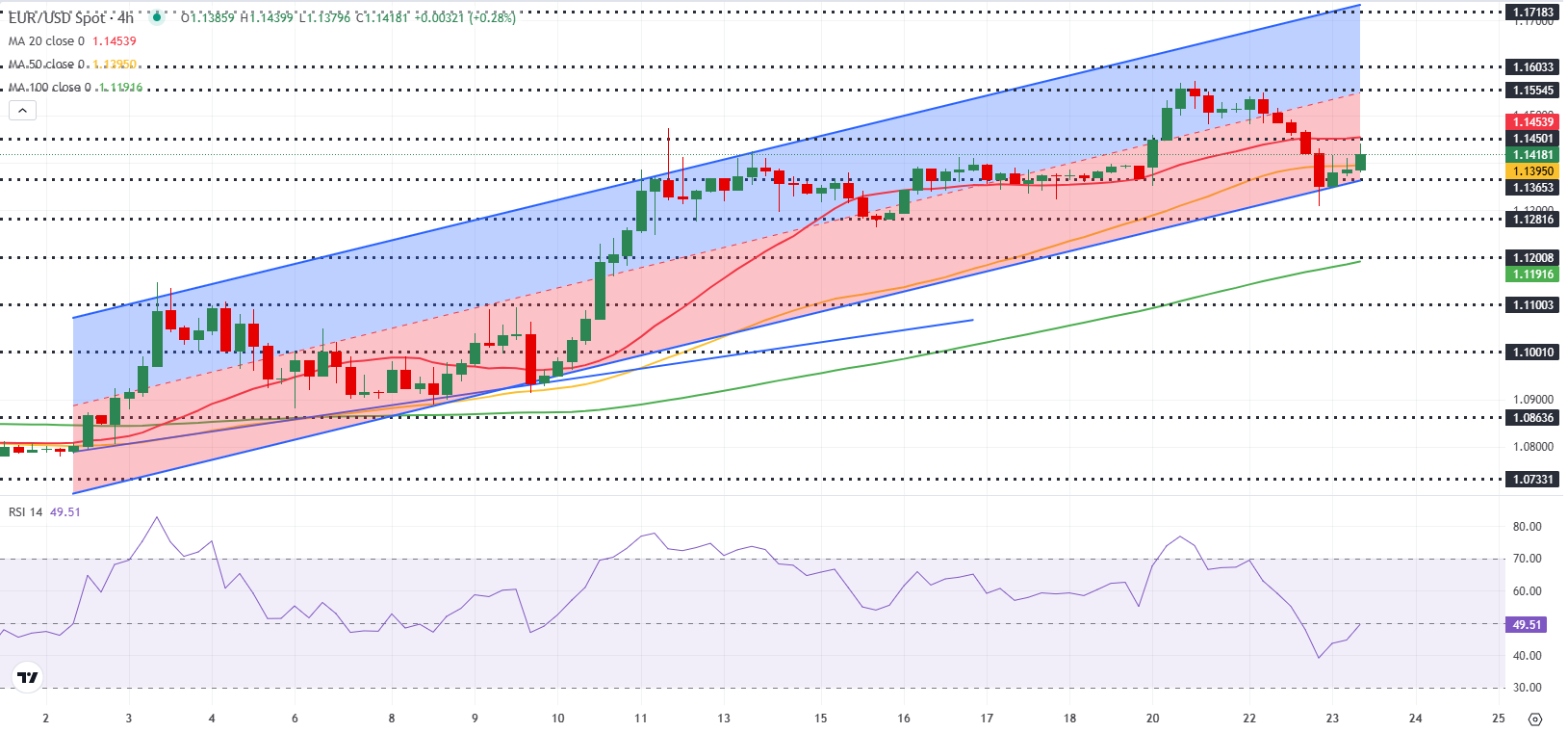Select An AI Action To Trigger Against This Article
- EUR/USD rebounds from weekly lows, trades above 1.1400.
- The near-term technical outlook is yet to point to a buildup of bullish momentum.
- The US economic calendar will feature preliminary PMI data for April.
EUR/USD came under bearish pressure and closed deep in negative territory on Tuesday. After extending its decline to a fresh weekly low near 1.1300 in the Asian session on Wednesday, the pair regained its traction and recovered above 1.1400 in the European session.
Euro PRICE This week
The table below shows the percentage change of Euro (EUR) against listed major currencies this week. Euro was the weakest against the New Zealand Dollar.
USD EUR GBP JPY CAD AUD NZD CHF USD -0.21% -0.18% -0.21% -0.32% -0.48% -1.07% 0.62% EUR 0.21% -0.13% -0.03% -0.16% -0.45% -0.90% 0.82% GBP 0.18% 0.13% 0.26% -0.03% -0.34% -0.78% 0.94% JPY 0.21% 0.03% -0.26% -0.11% -0.38% -0.73% 0.87% CAD 0.32% 0.16% 0.03% 0.11% -0.27% -0.74% 0.97% AUD 0.48% 0.45% 0.34% 0.38% 0.27% -0.42% 1.25% NZD 1.07% 0.90% 0.78% 0.73% 0.74% 0.42% 1.76% CHF -0.62% -0.82% -0.94% -0.87% -0.97% -1.25% -1.76%The heat map shows percentage changes of major currencies against each other. The base currency is picked from the left column, while the quote currency is picked from the top row. For example, if you pick the Euro from the left column and move along the horizontal line to the US Dollar, the percentage change displayed in the box will represent EUR (base)/USD (quote).
US President Donald Trump said at a press conference late Tuesday that he had no intention of firing Federal Reserve (Fed) Chairman Jerome Powell, despite being frustrated with high interest rates. This comment eased fears over the Fed losing its independence and helped the US Dollar (USD) erase a large part of Monday's losses.
The data from the Eurozone showed on Wednesday that the business activity in the service sector contracted in April, with the flash HCOB Services Purchasing Managers (PMI) Index dropping to 49.7 from 51 in March. In the same period, the HCOB Composite PMI declined to 50.1 from 50.9.
Assessing the survey's details, "the European Central Bank is getting some mild support for its rate-cutting stance from the price indicators in the services sector, which the monetary authorities are closely watching," said Dr. Cyrus de la Rubia, Chief Economist at Hamburg Commercial Bank. "Costs have risen at a similar rate to March, but the increase in selling prices has slowed significantly."
In the second half of the day, the US economic calendar will feature preliminary S&P Global PMI data. In case both the Manufacturing and Services PMIs arrive above 50, the USD could stay resilient against its rivals and make it difficult for EUR/USD to extend its recovery. On the other hand, the USD could come under additional selling pressure if the details of the survey highlight a significant deterioration in the private sector's sentiment due to the uncertainty created by the Trump administration's new tariff regime.
EUR/USD Technical Analysis

The Relative Strength Index (RSI) indicator on the 4-hour chart stays near 50, reflecting a neutral stance in the near term. Additionally, EUR/USD rose above the 50-period Simple Moving Average (SMA) but it's yet to clear the 20-period SMA.
Looking north, immediate resistance could be spotted at 1.1450 (20-period SMA, static level) before 1.1500 (round level) and 1.1550 (mid-point of the ascending channel). On the downside, 1.1360 (lower limit of the ascending channel) aligns as first support ahead of 1.1300 (static level, round level).